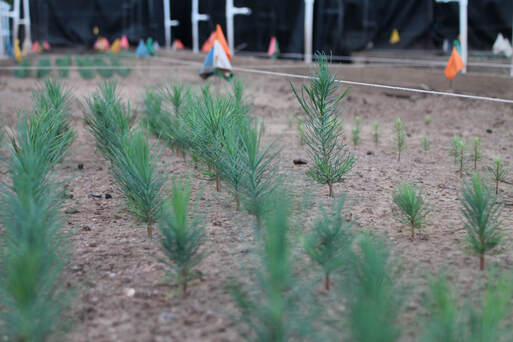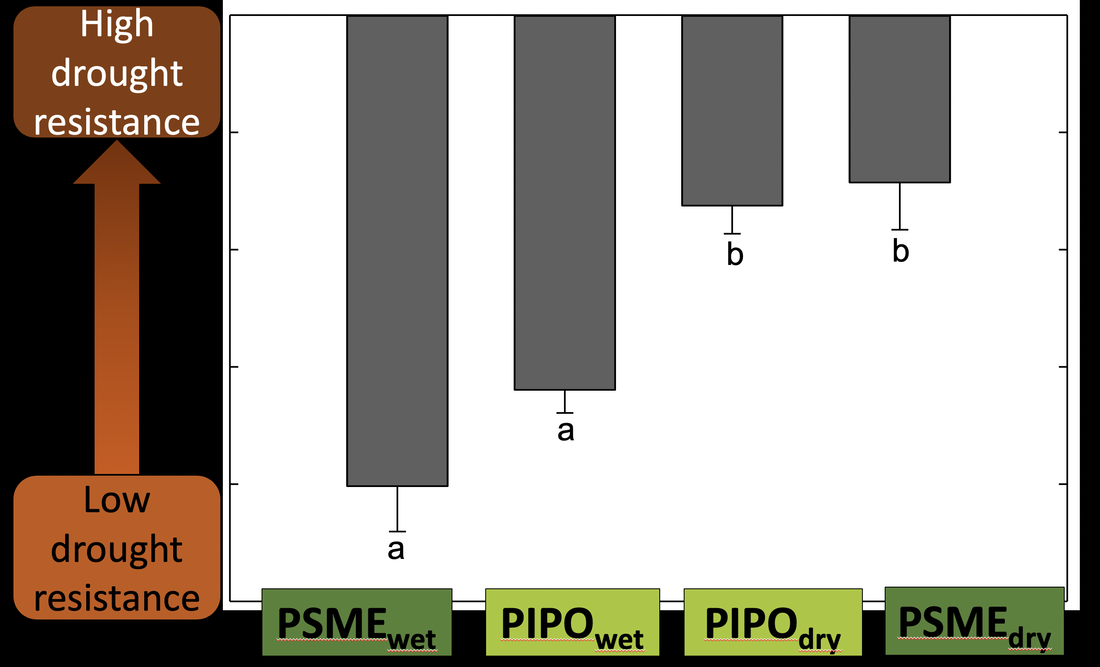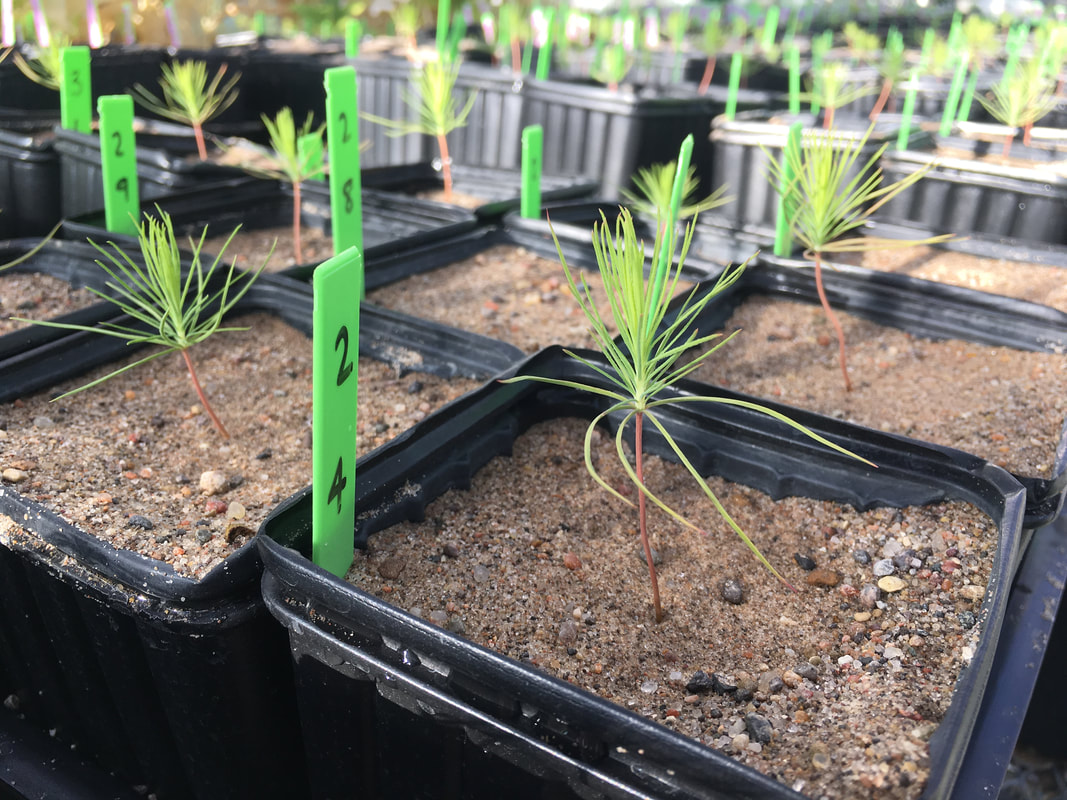MY SITE
Ecotypic variationHow do seedling populations from contrasting climates respond to stress?
Understanding how within-species seedling populations from contrasting climates respond to environmental stress helps us better predict what future forests will look like. This is particularly useful for assisted migration and reforestation efforts. We assess within-species variation in functional and physiological traits such as drought resistance (leaf d13C), heat tolerance (chlorophyll fluorescence), gas exchange, turgor loss point, leaf C:N, leaf d15N, and non-structural carbohydrates. We focus on conifer seedlings (Ponderosa pine, Douglas-fir, loblolly pine). Marias et al. (2016) Tree Physiology Ulrich et al. 2020 Frontiers in Plant Science |





